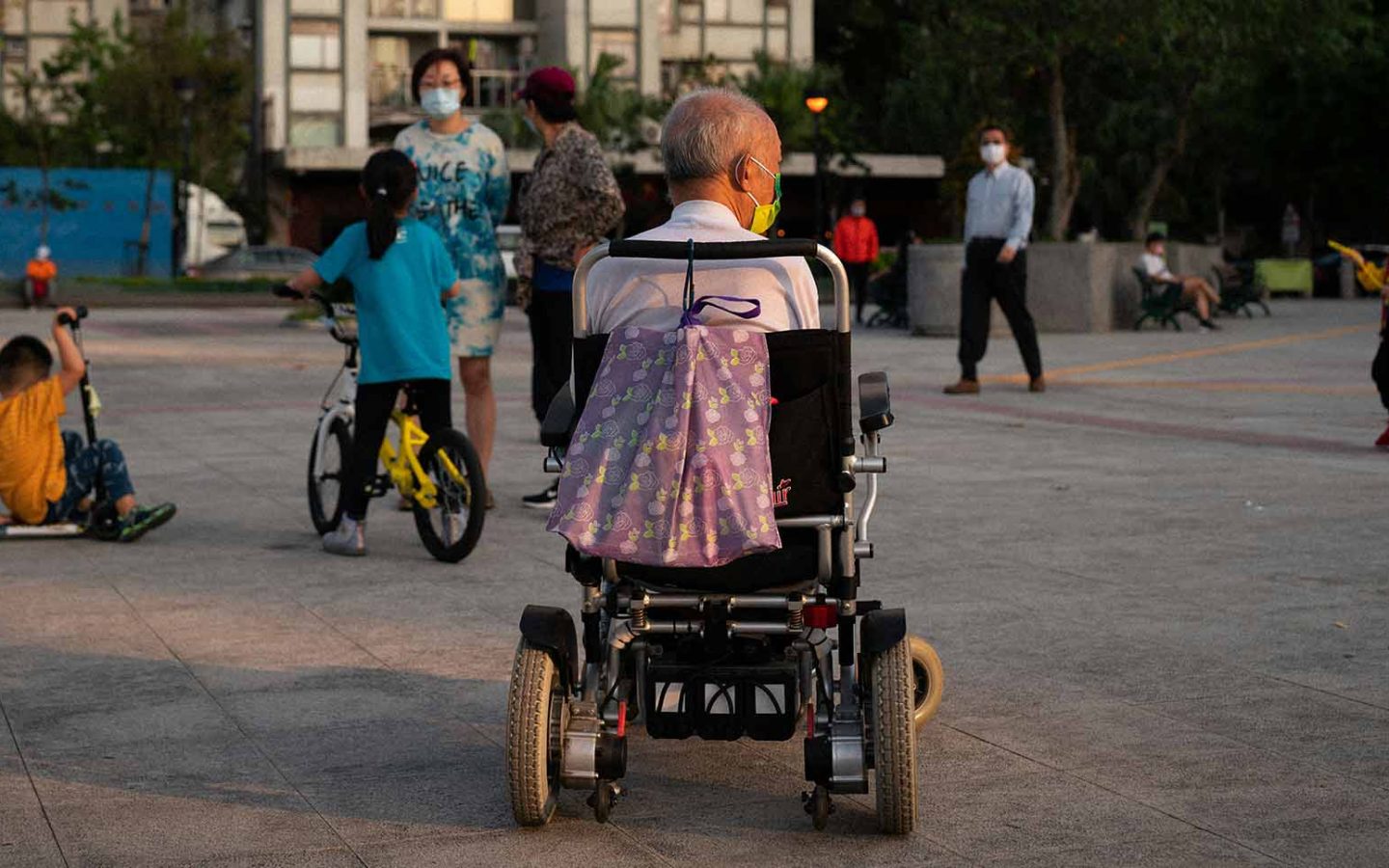Growing unmet care needs? Untangling recent trends among older people in China
The unmet care needs of older people have garnered growing concern in many ageing societies. Globally, 142 million older people aged 60 and above cannot meet their basic needs, such as dressing and bathing independently. A recent Age UK report estimated that 1.6 million people aged 65+ have unmet needs for care and support in 2022. In Australia, 1.3 million older people (one in three) living in households reported having unmet care needs in 2018. Whilst these numbers are concerning, highlighting unmet care needs as a global issue, many questions remain:
- What are ‘unmet care needs’?
- How do we measure them?
- Why is it important to examine the scale and changes in unmet care needs over time?
This commentary piece will address these questions and illustrate them with an ongoing case study in China.
What are unmet care needs?
Despite the ongoing debate on definition, unmet care needs generally refer to the gap between the need for and receipt of support with essential functional activities, such as washing, walking across the room, dressing, eating, getting out of bed, and going to the toilet. The care support can come from both ‘informal’ sources (e.g., family members and friends) and ‘formal’ sources (e.g., community- and institutional-based care and paid home services). Considering the subjective and multidimensional nature of ‘need’, it is difficult to measure unmet care needs comprehensively. Two approaches have been used in existing research and practice to assess if a need is unmet. An ‘absolute’ approach considers unmet needs as having care needs but failing to receive any forms of support (which the Age UK report used). In comparison, a ‘relative’ approach identifies those who need and receive support but perceive the support received as insufficient.
Addressing unmet care needs is critical and policy-relevant because meeting an individual’s care needs is a “fundamental human right to dignity and decent life”. Additionally, research has found that unmet care needs can lead to multiple negative health and wellbeing outcomes, such as lower quality of life, more hospitalisations, and higher risks of mortality. Given these consequences, reducing unmet care needs should be a critical policy issue. Understanding the scale and trends of unmet care needs is crucial for the strategic plan of social care or long-term care (LTC) systems as well as the effective allocation of care resources.
The long-term care system and unmet care needs in China
As in many countries, informal care provided by family members, especially women, has been the primary source of LTC for older people in China. The Confucian norm of filial piety (or xiào) prescribes the moral obligation of children to attend to the needs of their parents and care for their parents when they get old. Under the communist regime, work units (cities) and communes (villages) also played a supplementary role in welfare provision. However, this system gradually collapsed after the market-oriented economic reforms during the 1980s and 1990s. In this context, the government promoted the familisation of care and enforced family responsibility in providing LTC through a series of policy directives and laws (i.e., PRC Elderly Rights and Protection Law). The formal LTC system, whether public or private, was minimal before the 2000s. State-funded LTC (i.e., social welfare homes) services are only available for benefits recipients who have no ability to work, no source of income and no family to support them. This benefit still continues but only covers 2.5% of older people aged 60 and above in 2014.
Nevertheless, the heavy reliance on informal care is unsustainable against the backdrop of rapid population ageing, changes in family structures, and large-scale out-migration of younger generations in China. In 2021, 191 million (13.5%) Chinese people were 65 years and above and the number was estimated to reach 395 million in 2050, whilst the total fertility rate fell from 6 in the 1950s to a record low of 1.09 in 2022 partly due to the One Child policy and rising living costs. In addition, the economic expansion combined with the removal of mobility restrictions resulted in mass internal migration since the 1980s. To date, nearly one in four Chinese people does not live in their household registration area, most of whom are young or middle-aged people. Old people, especially in rural areas, are mostly ‘left behind’ with little to rely on. The rising demand for LTC, coupled with the shortfall of informal caregivers, is indicative of a looming surge in unmet care needs for Chinese older people.
In response to the concerns of unmet care needs, the government has launched a series of reforms to develop a modern LTC system since the 2000s. Starting in 2006, policy documents began addressing the development of LTC services, and by 2011, the government proposed a “90-7-3” LTC structure. This framework emphasised the foundational role of home-based services, aiming for 90% of older people to receive home care, 7% community-based services, and 3% institutional care. The government has also encouraged public-private partnerships to construct LTC institutions (e.g., nursing homes, retirement communities, and community centres) and deliver LTC services by offering subsidies and tax breaks to private providers. With this effort, the number of institutional care beds reached 7.3 million in 2018, up from 2.3 million in 2008. To further improve the affordability of the LTC services, the LTC insurance pilots were initially launched in 15 cities in 2016 and expanded to 49 cities in 2023 with 1.95 million beneficiaries.
Despite the progress, the Chinese LTC system is still in its infancy compared with most developed countries, challenged by low availability of home-based services, lower quality of care, and shortage of public financing and workforce. These challenges are much more pronounced in rural areas, where socioeconomic development has lagged far behind urban counterparts.
Unmet care need trends in China
The review above sketched a changing landscape of the LTC system in China during the past two decades. However, can these recent developments in the formal LTC sector mitigate the shortfall of informal caregivers in China?
To answer this question, we used unique large-scale survey data to empirically examine the temporal dynamics of unmet care needs from 2005 to 2017 in China. To unravel the underlying drives of changes as well as provide a more robust estimation, we differentiated changes over calendar years and changes across generations. Our preliminary results show that, on average, 57% of Chinese older people aged 65 and above with care needs have either absolute or relative unmet care needs over the study period. However, we did not find significant differences in unmet care needs from 2005 to 2017.
Further analysis suggests that while the increasing living distance between older parents and adult children contributes to the rise in unmet care needs, the increasing use of formal LTC services (e.g. institutional care, paid care workers) partly counteracts the rising trends. Moreover, younger generations (those who were born after the 1940s) have higher risks of experiencing unmet care needs. This is also possibly relevant to the out-migration of their adult children. This generational shift also underscores an urgent need for a more sustainable LTC system in China, as unmet care needs may increase with the younger generation as they age.
Future directions
This preliminary analysis provides a more robust analysis of the trends of unmet care needs in China and the factors contributing to the temporal changes. However, several questions await further examination. These are:
- Firstly, the findings regarding the role of LTC development are only suggestive. Therefore, our future research will investigate what specific policies and LTC arrangements influence unmet care needs.
- Secondly, this study only analysed those who were born before 1948. When data becomes available, it is important to also explore the unmet care needs of the younger generation, especially the baby boom generation (born in the 1950s and 1960s) who were influenced by the One-Child policy.
- Thirdly, international comparisons can provide us with a reference of the magnitude of unmet care needs and enable us to understand how political, institutional and cultural contexts can influence the scale and trends of unmet care needs.
Our next step will involve answering these questions by using comparative data from Europe and other East Asian countries to examine the scale and changes in unmet care needs across various care regimes and cultural contexts. This analysis will be complemented by a systematic document analysis of document analysis on long-term care and social care policies in selected European and East Asian countries. The comparative perspective and cross-national evidence will further enrich our understanding of the broader social and institutional contexts that shape the unmet care needs of older people, enhancing the knowledge base for how to design a more efficient social care and long-term care system.
About the author
Jingwen joined the Centre for Care in July 2023 as a Research Associate working on Care Data Infrastructure. Her research interests are in ageing, inequalities in health and care, gender, and life course with a strong focus on quantitative methods.





